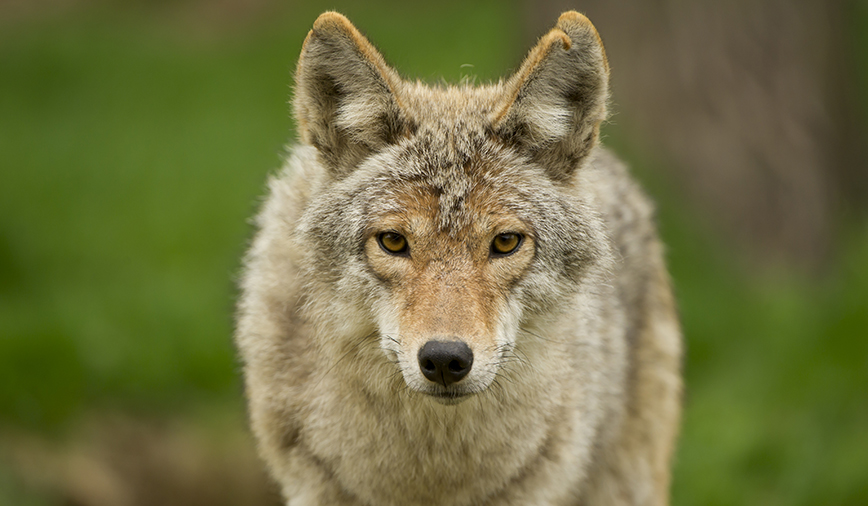Change is an undeniable part of life. Just ask Bob Dylan (“The Times They Are A-Changin’,” 1963) and David Bowie (“Changes,” 1971). Or Barack Obama and Joe Biden (“The Change We Need,” 2008). Or coyotes.
Coyotes, despite humans’ best efforts to thwart them, have become masters at handling change. Their presence here in Illinois dates back through the millennia, to a time when they were one of many large predators on the scene. But when European settlers arrived, those predator numbers took a nosedive. Throughout much of the 19th and 20th centuries, coyotes—and the wolves, bears and cougars with which they shared hunting grounds—were virtually nonexistent in Illinois.
But more change was yet to come. As the 20th century progressed, human population numbers increased. And so did coyotes. Their population numbered in the thousands by the mid 1970s, and in the 1980s was estimated at 20,000–30,000.
Today coyotes are pretty much a part of our urban and suburban fabric. I’ve seen them sauntering along our street in St. Charles, and found ample evidence of their presence along many of our local bike trails and park paths. They may change routes or prey items from night to night but, by and large, it looks as though coyotes are here to stay.
I have one friend in particular who’s pretty freaked out by the idea of coyotes in her neighborhood. They are, after all, predators, she says. And, to her way of thinking, predators are no good. After all, look what almost happened to Little Red Riding Hood. Big, Bad Wolf.
Unfortunately, most media reports tend to sustain this stereotype. Other than the story of the coyote that curled up in the cooler at a Quiznos in downtown Chicago a couple years ago, most coyote-related publicity is negative.
It’s true, coyotes do occasionally eat dogs. And cats. But rodents make up a far greater portion of their diets. Further, coyotes have helped make a dent in our area’s burgeoning populations of white-tailed deer and Canada geese.
Something else that goes widely unreported: Coyotes aren’t strict carnivores. Not to be too graphic, but have you ever seen coyote scat in summer? During warm-weather months, when the livin’ is easy, these wily hunters are far more likely to fill up on apples, plums and other fruits than they are to take a chance on a Fido or Fluffy.
This time of year, coyotes have something else besides food on their mind. February is mating season. In a little more than two months, the coyote population in Kane County may change yet again, as pups are born and reared.
As our suburban landscape continues to change, expect coyote habits to change along with it. Because, as a wise man once said, “When you’re through changing, you’re through.” And coyotes, it would seem, are anything but.
Want to learn more about coyote behaviors and trends? At their next meeting, the folks at Kane County Audubon will host Chris Anchor, a wildlife biologist with the Forest Preserve District of Cook County who studies area coyotes. The meeting, which is free and open to the public, will be held at 7 p.m. on Wednesday March 11 at the Geneva Park District’s Sunset Community Center, 710 Western Ave., Geneva.
Pam Otto is the manager of nature programs and interpretive services for the St. Charles Park District. She can be reached at potto@stcparks.org or 630-513-4346.

